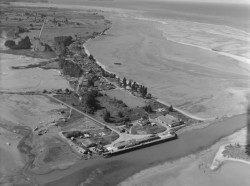We’ve re-focussed our Coastal Management Project in favour of an ‘all-natural hazards’ community adaptation approach, see our Hazard and Climate Adaption page for more information.
The options presented below and the feedback we received will stand us in good stead for future adaptation planning conversations and it will influence a range of Council’s work programmes.
Through the Coastal Management Project (2019-2022) we started the conversation with our communities on how we can respond to sea level rise and coastal hazards by identifying high-level options to enable us to adapt.
To help consider the options, we are presenting four option categories – accommodate, protect, avoid, and retreat. The options within the categories cover both new development and intensification of existing developed areas.
Below you’ll find a summary of each of these four option groupings and some examples of the range of measures that we are already implementing within our District.
To support our conversations on coastal management options, we have prepared this technical report:
This work is guided by the recommended good practice as set out in the Ministry for the Environment’s Coastal Hazards and Climate Change Guidance (2024)(external link).
The community conversations that we held between 6 September to 15 October 2021 looked at the options at a regional level to ensure we’re considering the range of possible coastal management options available. The feedback received will help us understand your views on these options and if there are other options or ideas for coastal management that we should consider. This will ensure that we avoid narrowing down the options too early in the process. The feedback has been summarised into the following report:
Through these community conversations, we hope to raise awareness and develop a common understanding about what we know about sea level rise and coastal hazards in Tasman and the options we have for responding. This will ensure that we’ll be better prepared for making decisions in the future.
Some options will be ‘quick wins’ to implement, while other options such as retreat would require significant forward planning. It is likely that a combination of options will be required and staged over time, as part of our long-term adaptive planning for sea level rise and coastal hazards.

1956, Motueka Wharf and beach. Whites Aviation Ltd: Alexander Turnbull Library, Wellington, New Zealand.
Consideration of options requires input from a range of community interests including landowners and residents, iwi, council staff and technical experts, and the wider community. As we have these coastal conversations, it’s important that we manage our expectations. Options that may be preferred by individuals or groups may not be automatically included in our long-term adaptive planning if they have significant environmental, cultural, or socio-economic impacts.
The discussions we’re having on coastal management options are within the context of:
Long-term adaptive planning work will take several years to complete and the community conversation will be ongoing. See our Adapting to Natural Hazards and Climate Change page for more information.